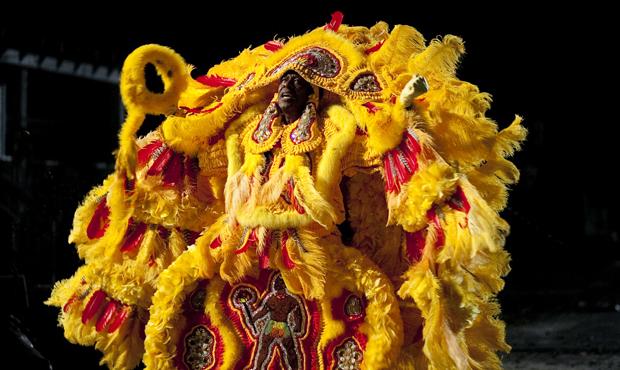We’ve previously covered things to do
and places to eat in New Orleans. Now as we get closer to March 14, it is worth
investigating the history of these delicious crustaceans.
Crawfish season lasts from late
February through early June. Crawfish live and grow in bayous that dot the Mississippi
River and its estuaries. Before European settlement, the creeks and lakes of
southern Louisiana teemed with crawfish. For centuries, local Native Americans
caught crawfish by baiting wooden reeds with venison. They would dip the reeds
in the water and pull them up—with crawfish dangling off the reeds. Using this
method Native Americans caught these crustaceans by the bushel. Consumption of
crawfish spread next to the Acadians. They arrived in Louisiana in the 1750s. The
Acadians were French settlers who had been expelled from Canada by the English
during the Seven Years War. The Acadians began incorporating local seafood into
their cuisine. Over time, these delicious crustaceans became a staple of Cajun
cuisine. Local Cajun legends offer a slightly different history of crawfish.
They claim that lobsters followed the Acadians down from Canada. When they
entered the warmer waters of the gulf, the lobsters shrank to their present, diminutive
size.
| Watch out... it'll get you. |
The commercial sale of crawfish began
only in the late 1800s. The first recorded harvest of crawfish occurred in
1880. The crawfish, raised in the Atchafalaya Basin, resulted in a harvest of 23,400 pounds, worth about $2,140
(about $51,000 in today’s money). In 1908, the U.S. Census Bureau recorded that
Louisiana produced about 88,000 pounds of crawfish per year, worth about $3,600
(about $93,000). The Great Depression of the 1930s drove the price of crawfish
down to as low as 4 cents per pound. Technological advancements, including
trucking, railroads, and refrigeration allowed for the movement of live
crawfish from the rural bayou to urban centers like Baton Rouge and New
Orleans. The introduction of traps and nets allowed for the collection of
greater numbers of crawfish. In the 1930s, Louisiana began to cultivate the
production of crawfish on farms. Rice had long been a staple of bayou farmers.
In order to gain more income, rice farmers began re-flooding their fields in
order to produce harvests of crawfish in the winter and early spring. This practice
soon spread across Louisiana wherever low-lying ponds and marshland could be
found.
| A typical haul. |
The process of farming stabilized
crawfish production. Before farming, the harvest in any given year depended on
the water levels in the Atchafalaya Basin. Thus the market fluctuated wildly
from year to year. By the mid-1960s, over 10,000 acres of farms were spread
across Louisiana. In the decades since, crawfish farms have only continued to
grow to approximately 120,000 acres. Louisiana accounts for 85%-95% of total
U.S. crawfish production. In 1960, the community of Breaux Bridge was named the
crawfish capitol of the world and held a yearly crawfish festival. With the increasing consumption and
availability of crawfish its profile began to grow. Restaurants began serving
crawfish on their menus and the famed dish, crawfish etouffee was born. The
process of eating crawfish then passed in the local consciousness as a way to
celebrate local food and served as another way for Louisianans to come together
and celebrate their home. Today the
industry accounts for 7,000 jobs and about 300 million dollars in revenues.
| The end result. |
The
process for cooking crawfish has stayed the same (and this may attest to the
longevity of crawfish consumption); get a pot of water boiling (seasoned of
course), add the live crawfish, let cook for several minutes. Then eating—well
peeling first, then eating—the crawfish on newspaper covered tables until you
can’t eat them anymore. It’s a tradition that we look forward to upholding on
March 14.


